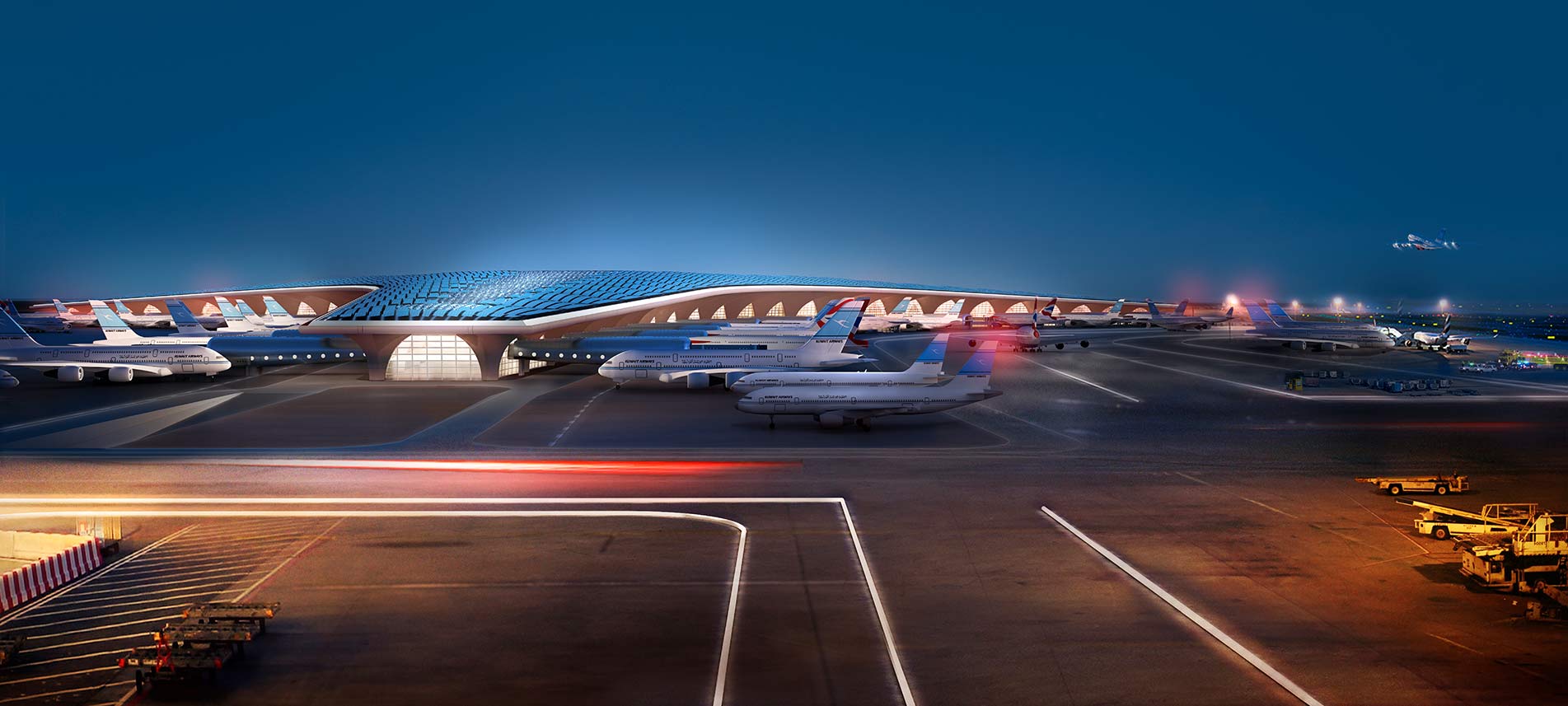The architect of the terminal building is world renowned Architect for his excellent designs Forster + Partners. The terminal has a trefoil plan, comprising three symmetrical wings of departure gates. Each facade spans 1.2 kilometers and all extend from a dramatic 25-meter-high central space.
To future aid orientation, the building is planned under a single roof canopy, punctuated by glazed openings that filter daylight, while deflecting direct solar radiation. The canopy extends to shade a generous entrance plaza and is supported by tapering concrete columns - their fluid, organic forms draw inspiration from the contrast between the solidity of the stone and movement of Kuwait's traditional dhow sailing boats.
Terminal will have a total floor area of 708,000 m2 under a single roof. The design of the terminal not only considers modern outlook with enhanced passenger comfort but also considers several sustainability initiatives. Its design is rooted in a sense of place, responsive to the climate of one of the hottest inhabited environments on earth and inspired by local forms and materials.
Terminal roof spans over an area of 315,000m2. It has been designed to allow ample natural day light to pass through the building, optimizing the use of artificial lighting. The roof is also fitted with photovoltaic panels targeting to produce 12MW of sustainable energy. With several such initiative, the terminal building will target LEED GOLD certification aiming to make it the LARGEST passenger terminal building with this level of environmental accreditation.
The Master Plan of the airport has developed strategically with greater flexibility, safe guarding the future growth and expansion strategies. The airport will initially accommodate 13 million passengers per year, with the flexibility to increase to 25 million passengers and to accommodate 50 million passengers with future development.

